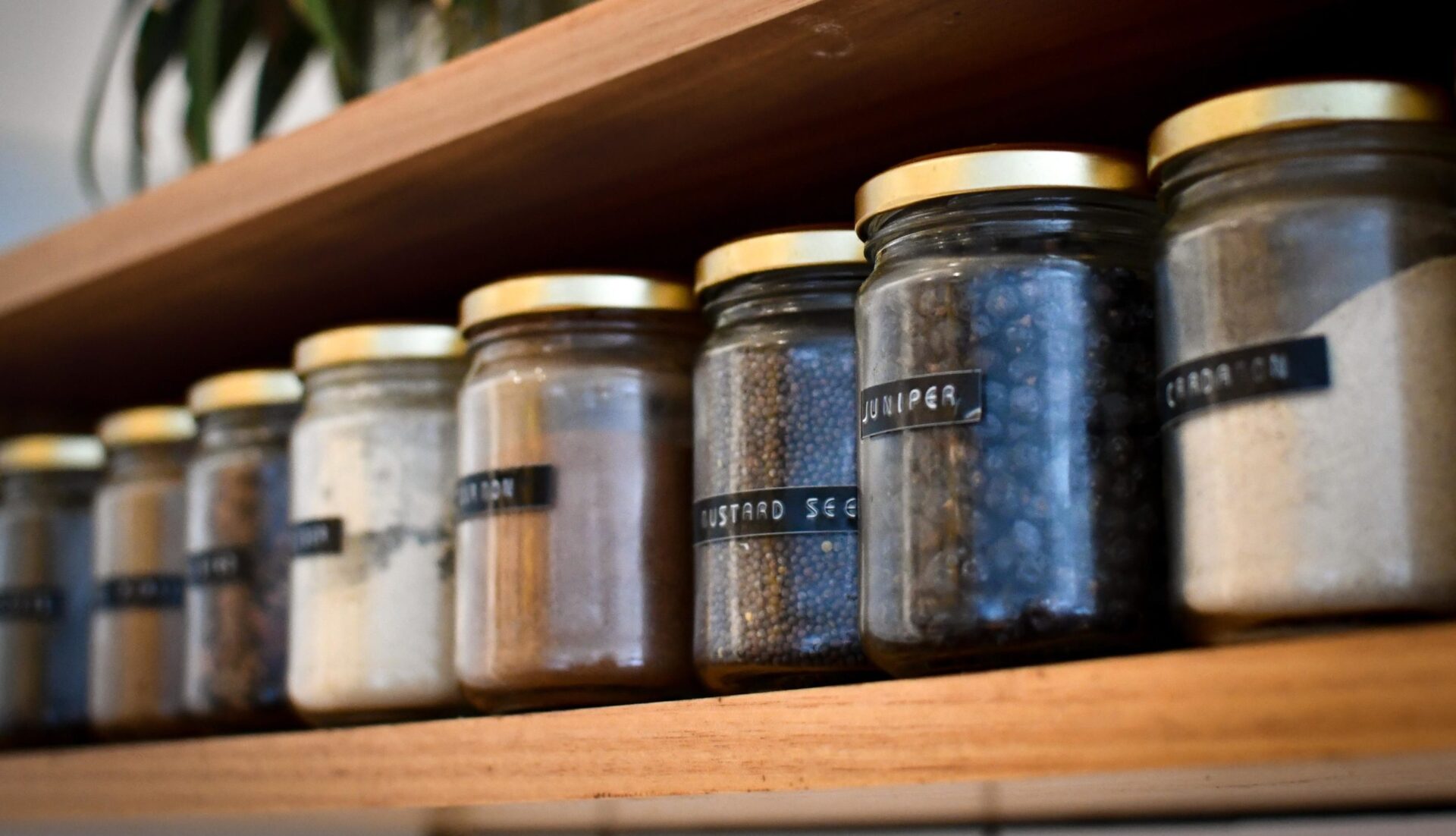19 easy ways to reduce your ecological footprint today

These days, being eco-friendly and green is fashionable, but they’re also concepts that can come with judgment and expectations of perfection. This can be off-putting, leaving you to wonder whether there’s any point in trying to reduce your ecological footprint if you can’t do absolutely everything in your power.
A world where we don’t have to worry about greenhouse gases or the climate emergency is one we all hope to live in one day. But, starting at home by doing our bit to reduce the amount of waste we create and the carbon footprint we leave is a powerful means to get there. As John Steinbeck says in East of Eden, “and now that you don’t have to be perfect, you can be good.”

Here at SuperBee, we’re strong believers in the idea that small changes can make a big difference, especially if everyone starts making their own adjustments. So, while we applaud those who are prepared to go without a cool drink if they forget their reusable bottle, we also stand by the mum who buys her kid a bottle of water on a hot day, when the 20-minute trip to the shops ended up taking two hours.
As well as accepting that we’re all human, we also know that small changes that add up are often more sustainable than massive transformations. If we try and do everything all at once we’re likely to become overwhelmed — but by starting small, we can develop positive habits upon which we can grow and build.
Here are our favorite small steps for reducing our ecological footprint — but, remember, you don’t have to try them all at once.
Reducing your reliance on single-use plastic
Single-use plastics are to blame for an inordinate amount of greenhouse gas emissions — in the US, the plastics industry produced 232 million tons, or the equivalent of 116 coal-fired power plants, making plastics in 2021. While taking a political stance and lobbying your local representative or government to push for greater controls on the plastics industry is one of the ways you can make an impact, at an individual level, it’s on all of us to reduce our use of single-use plastics. Here are some of the easiest ways.
1. Keep a canvas tote in your car
Reusable totes are great for when you just need to pop into the grocery store or want to head into a shop but not pick up a single-use plastic bag.
Because reusable cotton bags require quite a lot of energy to produce, you’ll need to use them at least 173 times for them to be more environmentally friendly than single-use plastic bags — so keep them handy and you should get years out of them.
2. Leave a fold-up shopping bag in your handbag
Opt for a small tote or shopping bag that can fold down small so you won’t even notice it’s there unless you need it.
3. Store your water bottle and coffee beaker by the front door next to your car keys
The easiest way to remember something is to put it in plain sight. Where better than right next to your car keys? It’s likely the last thing you’ll pick up before leaving the house.
4. Find a bar soap you love, instead of body and face wash
Solid bar soap is more sustainable than liquid soap stored in a single-use plastic container. Opt for an organic brand to guarantee that it isn’t packed full of chemicals that can damage waterways, and look out for companies that don’t use palm oil. This ingredient is linked to widespread deforestation across the world.
5. Get your liquids from a refill store
If you’re wedded to liquid soaps, another alternative is to head to your nearest zero-waste store for refills. Take a mason jar or an old shampoo bottle to fill up and you’ll pay just for the cost of the soap itself — which can even save you money in the long run.
6. Try bamboo toothbrushes instead of plastic ones
A billion toothbrushes are thrown away each year in the US, most of which contain plastic, while the average person will use 300 toothbrushes in their lifetime. The majority of plastic toothbrushes can’t be recycled, so that’s a hell of a lot of waste ending up in landfill.
Bamboo toothbrushes are significantly more environmentally friendly because the handle can be composted while the bristles can be recycled (although not every recycling center will accept them). Find out more on our FAQ page.
7. Buy groceries stored in cardboard packaging or reusable glass jars
A lot of groceries come packed in plastic packaging that immediately finds its way into the garbage. One of the easiest ways to reduce the amount of plastic you use in your home — and therefore your carbon footprint — is to switch out groceries with plastic packaging for those that come in cardboard or, in the case of fruit and vegetables, loose. You can bring reusable produce bags for the return journey back home.
Glass jars have a higher environmental impact because they weigh a lot more than plastic containers and require more carbon for transportation over longer distances, so opt for glass jars if you know the contents are locally made.
8. Grow your own herbs on your windowsill
Buying a plastic-wrapped packet of herbs might feel essential when you’re cooking up a storm in your kitchen for family or friends. But it’s far easier to grow your own herbs — and cut out the plastic packing altogether. Homegrown herbs will add delicious fresh flavors to your cooking (and taste better, because you’ve loved and tended the plant), all while making your kitchen look and smell lovely, too.
Reduce your energy usage
Cutting down your carbon emissions goes far beyond the home, however. Many of the choices we make on a daily basis contribute to our carbon footprints, so let’s examine some of the more common ways you can help the environment and reduce your carbon emissions.
9. Opt for seasonal produce, where possible
Not only does seasonal produce taste better (it’s recently been picked from the plant, after all), but it means that those fruits and vegetables have traveled a much shorter distance. Forget watery strawberries in winter — you’ll enjoy them much more during the summer months instead!
10. Cut down on your meat consumption
Agriculture is a large source of methane and nitrous oxide, two of the main greenhouse gases and when it comes to which types of produce have the greatest carbon footprint, the facts don’t lie. Animal products, including meat and dairy, have a far higher carbon footprint than vegetables. For example, producing one kilogram of meat emits 60 kilograms of greenhouse gases; a kilo of peas emits just one kilogram.
If you’re not ready to embrace a fully vegan diet, then start by reducing how much meat you eat — particularly beef, which has by far the highest carbon emissions.
11. Walk, cycle, or take public transportation
It might be tempting and far more convenient to hop in your car for that one-kilometer journey to reach your local store or to drop off the kids for school, but in the US, the average passenger vehicle releases 650g (1.4 pounds) of CO2 per kilometer — with large cars emitting even more.

The quickest way to minimize your carbon footprint is to skip the car completely and instead step out on your own two feet. Walking and cycling are by far the most sustainable choices, but taking public transportation or even carpooling can have an impact, too.
12. Invest in an electric car
The average electric car produces just one-third of the same emissions as the average petrol car, so if you’re in the market for a new vehicle, then electric is the way to go. Currently, just 1% of all cars in the US are fully electric vehicles; can you help bump that number up?
13. Stick to the ground
Love to travel? If you’re set on cutting down your carbon emissions radically, then sticking to overland travel is perhaps the greatest lifestyle change you can make. Flying from New York to Seattle and back generates around 524 kg (1,155 pounds) of CO2 per passenger — which is more CO2 than the average person produces per year in 41 countries around the world.
If you can’t avoid flying, then stick to economy class. Business class can lead to 50% more emissions because of the amount of space reserved for just one person, which would seat multiple people in coach.
14. Buy second-hand instead of new
If you’re looking for vintage clothing and accessories, you can often find really unique and beautiful items at a fraction of their original cost. And because they were higher quality to begin with, they’ll end up lasting longer than cheap, fast fashion.
15. Turn your heating down
Turning your heating down to 120˚F can save around 250 km (550 pounds) of CO2 a year and it’s an extremely simple way to reduce your carbon footprint.
If you’re updating your heater, consider replacing it with a heat pump instead, which can reduce energy consumption by 50% compared with furnaces and baseboard heating.
16. Wash your clothes in cold water
While you might think washing your clothes in hot water leads to a better clean, you can actually turn the temperature down on your laundry and reduce your carbon emissions at the same time. Washing your clothes in cold water twice a week can save you around 226 kg (500 pounds) of CO2 every year.
Using an all-natural laundry detergent rather than a chemical-packed detergent can also reduce the amount of energy and chemicals used to make your laundry detergent in the first place.
17. Change your light bulbs
Switching from incandescent light bulbs to LEDs can help you on the path towards a significantly lower carbon footprint. LEDs use a lot less energy to run (they can be up to 80% more efficient than incandescent bulbs) and, as a result, can save you up to $100 a year in electricity costs.

18. Buy in bulk
Rather than purchasing lots of individually-packed items, plan ahead and buy bigger loads of staples such as pasta, potatoes, and even toilet paper.
19. Compost your food waste
Whether you’re green-fingered and fancy having a go at starting a compost pile in your backyard or have a weekly food waste collection service in your area, composting your food waste helps to sequester carbon and prevent methane emissions from leeching into the environment.
In fact, food waste is believed to generate between eight and ten percent of global greenhouse gas emissions.
Feeling inspired?
Remember: don’t beat yourself up if you’re not perfect all the time! We believe that trying your best is far more important and will lead to a happier, healthier life and a happier and healthier planet.




